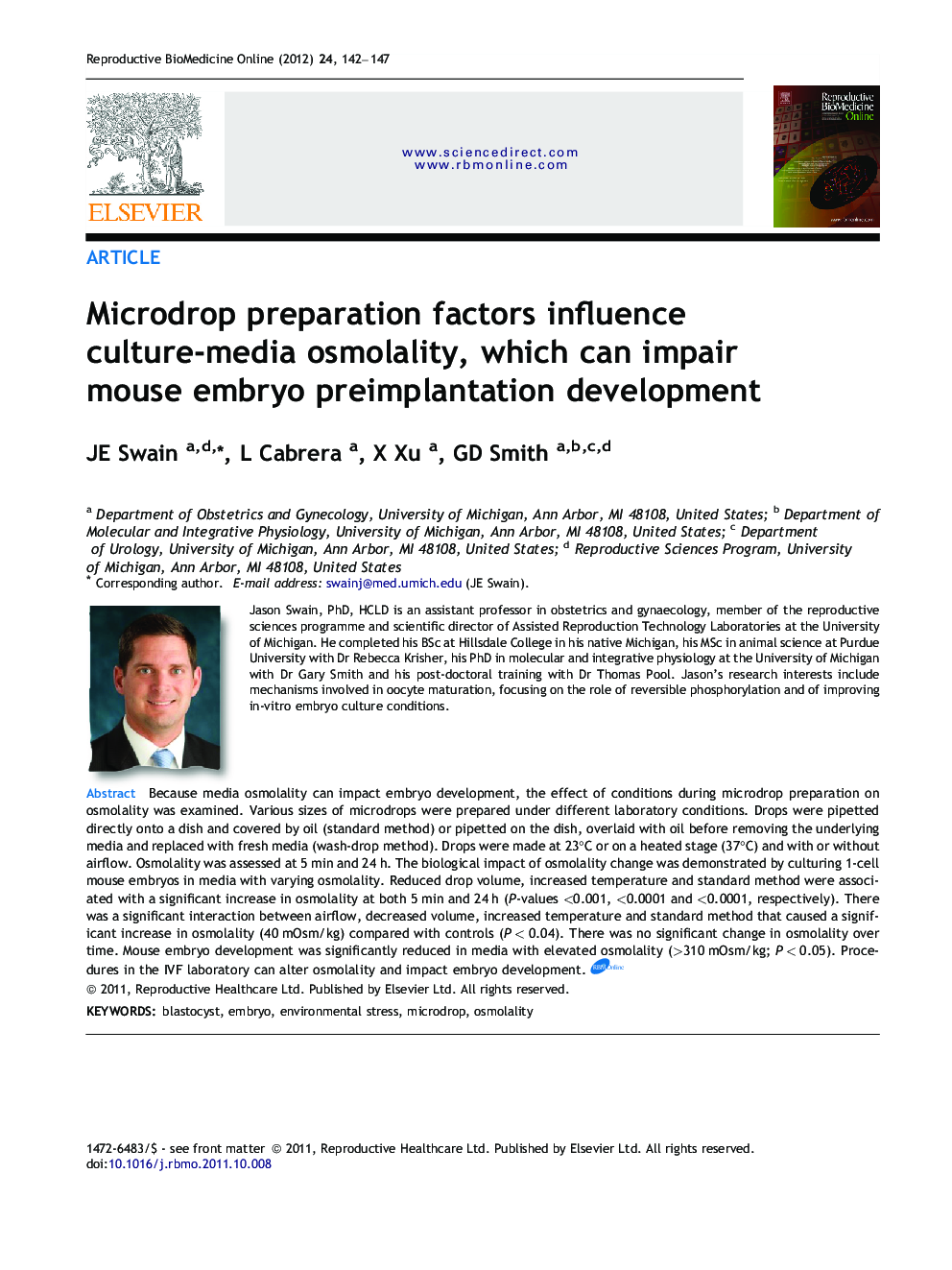| کد مقاله | کد نشریه | سال انتشار | مقاله انگلیسی | نسخه تمام متن |
|---|---|---|---|---|
| 3971169 | 1256753 | 2012 | 6 صفحه PDF | دانلود رایگان |

Because media osmolality can impact embryo development, the effect of conditions during microdrop preparation on osmolality was examined. Various sizes of microdrops were prepared under different laboratory conditions. Drops were pipetted directly onto a dish and covered by oil (standard method) or pipetted on the dish, overlaid with oil before removing the underlying media and replaced with fresh media (wash-drop method). Drops were made at 23°C or on a heated stage (37°C) and with or without airflow. Osmolality was assessed at 5 min and 24 h. The biological impact of osmolality change was demonstrated by culturing 1-cell mouse embryos in media with varying osmolality. Reduced drop volume, increased temperature and standard method were associated with a significant increase in osmolality at both 5 min and 24 h (P-values <0.001, <0.0001 and <0.0001, respectively). There was a significant interaction between airflow, decreased volume, increased temperature and standard method that caused a significant increase in osmolality (40 mOsm/kg) compared with controls (P < 0.04). There was no significant change in osmolality over time. Mouse embryo development was significantly reduced in media with elevated osmolality (>310 mOsm/kg; P < 0.05). Procedures in the IVF laboratory can alter osmolality and impact embryo development.Common IVF laboratory procedures can unexpectedly alter growth conditions and impact subsequent embryo development. A media characteristic that may be altered is osmolality. The effect of different microdrop preparation conditions on media osmolality was examined. Microdrops of various volumes were prepared under different laboratory conditions. Drops were pipetted directly onto a dish and covered by oil (standard method) or placed in the dish, overlaid with oil before removing the underlying media and replaced with fresh media (wash method). Drops were made at 23°C or 37°C and were prepared in a hood with or without airflow. Media osmolality was assessed at 5 min and 24 h. The biological significance of the osmolality increase was demonstrated by culturing 1-cell mouse embryos in media of various osmolalities. Reduced drop volume, increased temperature and standard method were all associated with a significant increase in media osmolality at both 5 min and 24 h. Airflow alone had no significant impact. Additionally, 10 and 20 μl volume, 37°C and standard method were associated with significant increases in media osmolality, compared with controls. There was a significant interaction effect between airflow, decreased volume, increased temperature and standard method, which caused an increase in osmolality (∼40 mOsm) compared with controls. There was no significant change in media osmolality over time. Mouse embryo development was significantly reduced in media with osmolality 310 and 330 mOsm. Environmental conditions in which microdrops are prepared can result in harmful media osmolality shifts. Therefore, laboratory protocols should be adjusted.
Journal: Reproductive BioMedicine Online - Volume 24, Issue 2, February 2012, Pages 142–147